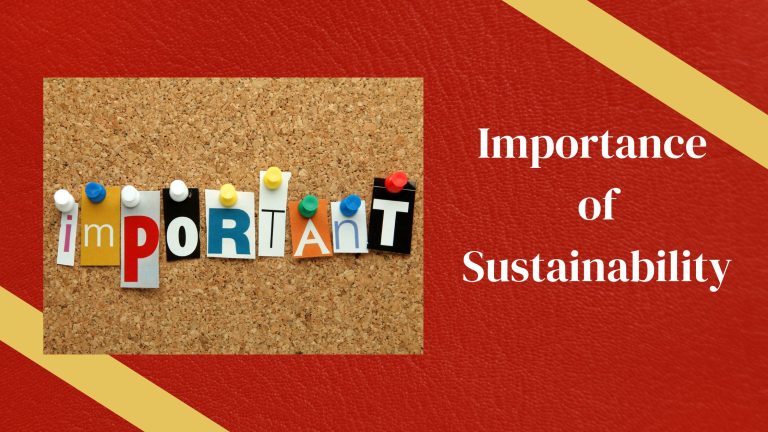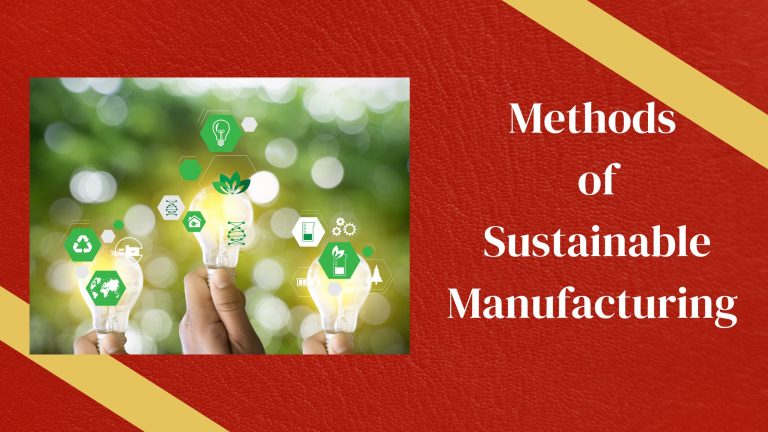Leather products are popular for their durability and longevity, and due to this, the leather industry accounted for USD 471.02 billion in 2024 and is expected to reach around USD 789.05 billion by 2033, expanding at a CAGR of 5.9% from 2024 to 2033.
But do you know that the leather industry has a significant impact on the environment due to the various production processes their raw material passes through to form a final product?
According to the data from Faunalytics, for tanning 1 kg of leather, leather manufacturing companies use up to 2.5 kg of chemical substances and up to 250 liters of water and generate up to 6.1 kg of solid waste.
Shocking and dreadful at the same time, isn’t it?
Today, people have become eco-conscious, and they look for businesses that respect the environment and adopt sustainable practices in leather manufacturing for a greener future.
That’s why we have come up with this blog to help you know the significance of sustainable manufacturing and how you can implement it in your business.
What is sustainable leather manufacturing?
Sustainable leather manufacturing uses eco-friendly methods to produce leather, minimizing the environmental and social impacts usually linked to leather production.
Sustainable leather production differs from traditional leather production because it prioritizes an eco-friendly tanning process that uses less water and energy, which in turn reduces water and energy consumption.
Here is a quick difference between sustainable and traditional leather production for your better understanding:
Aspect | Traditional Leather Manufacturg | Sustainable Leather Manufacturing |
Tanning Methods | Uses harmful chemicals like chromium. | Employs eco-friendly methods like vegetable tanning. |
Water Usage | High water consumption with significant waste. | Reduced water use with closed-loop systems. |
Energy Consumption | Relies on fossil fuels. | Uses energy-efficient and renewable sources. |
Waste Management | Poorly managed waste with high pollution. | Emphasizes recycling and proper waste treatment. |
Resource Sourcing | Often involves unsustainable practices. | Focuses on ethical sourcing and sustainable practices. |
Environmental Impact | Significant pollution and high carbon footprint. | Lower pollution and carbon emissions. |
Alternative Materials | Limited use of alternatives. | Explores plant-based and lab-grown leathers. |

Importance of Sustainability in Leather Manufacturing
Sustainable leather manufacturing balances the demand for high-quality leather products with the need to protect the environment and promote ethical practices. Let’s see the importance of sustainability in detail:
Environmental Benefits:
Reduction in Pollution:
It reduces pollution in the environment by choosing vegetable tanning methods and using less harmful chemicals to minimize toxic discharges and prevent the contamination of natural resources.
Waste Management:
The leather industry produces chemical residues and waste while manufacturing leather products. Sustainable leather manufacturing implements a closed-loop system and innovative waste management techniques to decrease the overall environmental impact and treat waste more effectively.
Consumer Demand for Sustainable Products:
As people have become more conscious of the environment and the factors affecting them, they have started prioritizing the purchase of sustainable goods. Due to this, the demand for eco-friendly and ethically produced goods has surged, forcing the brands to manufacture products that align with consumer values. Businesses functioning in the leather manufacturing industry attract a loyal customer base and build strong relationships with them when they adopt sustainable practices in their manufacturing process.
Long-Term Economic Benefits for Manufacturers:
Sustainable manufacturing practices offer significant economic benefits over time. While switching to more sustainable methods may involve higher initial costs, the savings in the long run can be profound. Sustainable practices can boost a company’s market position, as consumers and businesses increasingly prefer brands that demonstrate environmental responsibility. This can result in increased sales and market share.

Methods in Sustainable Leather Production
Here we have shared the sustainable leather production methods that you can implement in your business if you are planning to transition from traditional leather manufacturing methods:
Use of Eco-Friendly Materials:
Traditional leather production companies often use harmful chemicals like chromium salts for leather tanning, which significantly impacts environmental conditions and human health.
On the other hand, sustainable leather manufacturing companies use eco-friendly methods and less toxic alternatives to harmful chemicals that not only minimize the environmental footprint but also provide innovative solutions for eco-conscious consumers.
Energy-efficient manufacturing practices:
Unlike traditional leather manufacturing processes that rely heavily on fossil fuels, sustainable practices aim to reduce energy consumption and shift towards renewable energy sources. These practices include the installation of energy-efficient machinery and technologies that optimize production processes to use less power.
Recycling and Waste Reduction:
Sustainable leather manufacturing implements effective waste management strategies like recycling waste materials, such as using leather offcuts to produce smaller leather goods or as raw materials for other products.
Also, manufacturers are increasingly focusing on reducing waste at every stage of production, like treating and recycling water waste, to prevent pollution and conserve resources.
Water Conservation Techniques:
Sustainable manufacturing focuses on reducing water usage and improving wastewater management by adopting techniques like closed-loop water systems, which recycle and reuse water within the manufacturing process. This technique drastically reduces the amount of freshwater needed for leather tanning.
Role of Innovation and Technology in Sustainable Leather Manufacturing
Technological advancements in the leather industry are transforming sustainable leather manufacturing by introducing innovative solutions to address environmental challenges.
Bio-based Tanning:
They are derived from organic sources like plant extracts and microorganisms that are less toxic compared to traditional tanning agents. These bio-based tannins reduce the harmful impact of the leather industry on the environment and human health by adopting renewable resources for leather tanning.
Contribution to sustainability: It reduces the dependency of the leather manufacturing industry on harmful chemicals like chromium salt and other artificial agents for leather tanning. As a result, it reduces the release of chemical pollution in the environment. Hence, improving environmental conditions and human health through sustainable practices.
Digital Water Management:
Digital water management technologies use sensors and data analytics to monitor and control water usage in real time, which allows leather manufacturers to optimize water consumption and detect leaks. These technologies help the leather industry reduce water consumption by using it more efficiently.
Contribution to sustainability: It helps leather manufacturing companies track water usage in real time through sensors and data analytics that help them reduce water consumption during the leather tanning process.

Challenges and Opportunities
Every industry has its challenges that the companies face from time to time. But with challenges come opportunities as well. In this section, we’ll share the challenges and the strategies to overcome them. And at last, we’ll share some good opportunities you can grab through research, experience, and technological advancements.
Challenges Faced by Manufacturers:
Cost:
This is one of the most significant challenges leather manufacturing companies face while transitioning from traditional manufacturing to sustainable manufacturing because of the high cost associated with eco-friendly materials and technologies. The adoption of new technologies during the initial period of transition can be a barrier for small-scale businesses that are planning to make a switch.
Scalability:
Scaling up sustainable manufacturing practices can be challenging for businesses with large-scale production of leather products because organic resources used for leather tanning are in limited quantities. Also, the technologies in their early stage of adoption might not be capable of supporting the production demand in large-scale businesses.
Regulatory Compliance:
The leather industry is subject to stringent regulations aimed at reducing environmental impact and ensuring worker safety. Complying with these regulations can be challenging, especially as standards continue to evolve.
Strategies to Overcome These Challenges:
Cost Management:
Leather manufacturers can explore other strategies like investing in energy-efficient technologies and optimizing production processes to reduce long-term operational costs. They can also collaborate with suppliers to source eco-friendly materials in bulk to lower purchasing costs.
Scalability:
Addressing scalability issues involves investing in research and development to improve the efficiency and availability of sustainable technologies. Manufacturers can form partnerships with technology providers and research institutions to accelerate the development and adoption of scalable solutions.
Navigating Regulations:
Manufacturers should stay informed about current and upcoming regulations through industry associations and regulatory bodies to effectively manage regulatory compliance.
Opportunities for Growth and Market Expansion:
Market Demand:
Consumers are becoming more eco-conscious, driving up demand for sustainable and ethically produced leather goods. Due to the increase in demand, the manufacturers who already switched to sustainable practices for producing leather products can differentiate themselves in the market and attract a loyal customer base.
Innovation and Technology:
Since sustainability is a new market niche, the advancement of sustainable technologies and materials offers growth opportunities to sustainable leather manufacturing companies. Innovations such as lab-grown leather, biodegradable materials, and energy-efficient production methods improve environmental conditions and create new product categories, which can help manufacturers stay competitive and expand their product offerings.
Global Expansion:
The increased demand for sustainable leather products is not limited to one country or region; it has become a global phenomenon. Leather manufacturing companies that have already adopted sustainable practices can position themselves in the international markets, leading to increased sales and customer base.
Conclusion
The demand for sustainable manufacturing of leather products is increasing every day due to the increased eco-consciousness among consumers. Since sustainability has become a new niche in the leather manufacturing industry, companies that have already started practicing sustainability in their production process can grab a great deal in the global markets. Also, with the challenges come the opportunities, and there is always a way to overcome those challenges. So, if you are planning to enter the leather industry, focus on sustainability to position yourself advantageously in the competitive environment and contribute towards achieving a greener future in the leather sector.
